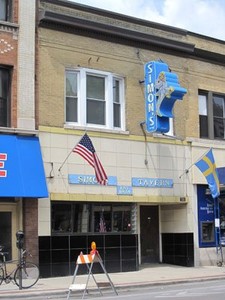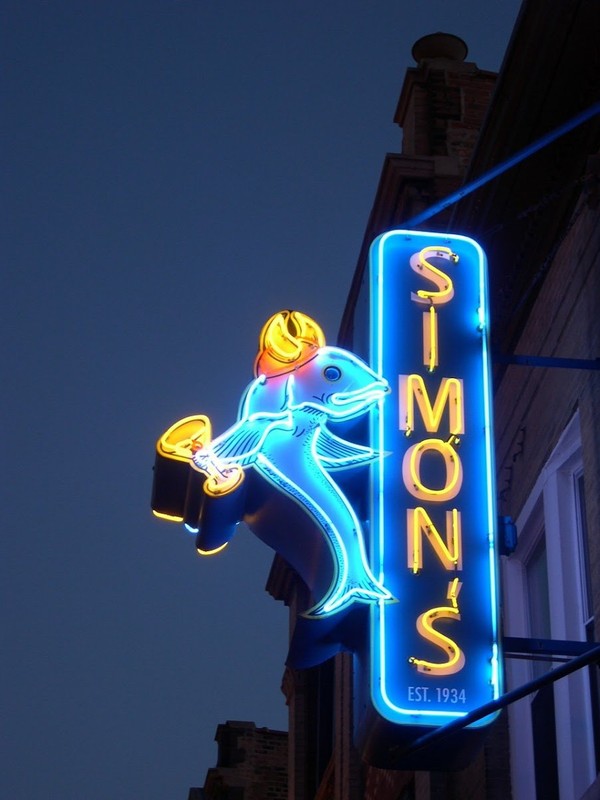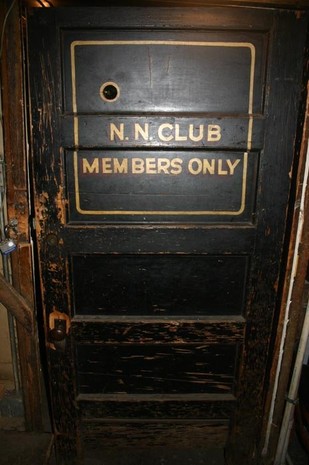Simon's Tavern
Introduction
Text-to-speech Audio
Images
Simon's Tavern facade.

Simon's famous fish marquee.

Original N.N. Club door

Backstory and Context
Text-to-speech Audio
Found inside Chicago’s historically Swedish neighborhood of Andersonville is the indispensable establishment of Simon’s Tavern. The tavern was named after the bar’s founder Simon Lundberg, a Swedish immigrant. After WWI, Lundberg operated a grocery store; but once Prohibition took effect, he began secretly selling whiskey with his coffee, likely acquiring his alcohol from Al Capone. Lundberg became so successful selling bootlegged whiskey that he afforded to purchase a new location on Clark Street to open a second location, which is the current location of Simon’s Tavern. As a means to better conceal the illegal alcohol flowing freely through his business, a proper speakeasy was established in the basement with a direct entrance through the back alley. This speakeasy became known as the No Name Club, N.N. Club for short. The N.N. Club served the neighborhood’s resident Swedes, offering them a brief escape from America and speaking English.
When Prohibition ended in 1934, Simon Lundberg smartly converted his second grocery store on Clark Street into a bar aptly named Simon’s Tavern. Simon operated his tavern until his death, at which time his son Roy assumed management. In 1994, Roy passed the Tavern onto Scott Martin who remains the current owner. Famous for its glogg, which is a top-secret mulled wine recipe, Simon’s Tavern has remained a cornerstone of Andersonville for over 80 years.
Sources
Marty, Victoria. It’s Glogg Time! Recipes May Vary But This Swedish Drink Always Brings Cheer. Edgeville Buzz. December 3, 2015. December 4, 2018. http://www.edgevillebuzz.com/news/glogg-time-recipes-may-vary-swedish-drink-always-brings-cheer.
Simon's Tavern: From Speakeasy to Legendary Bar. Umgas Magazine. December 4, 2018. http://www.umgasmagazine.com/simons-tavern-speakeasy-legendary-bar/.
